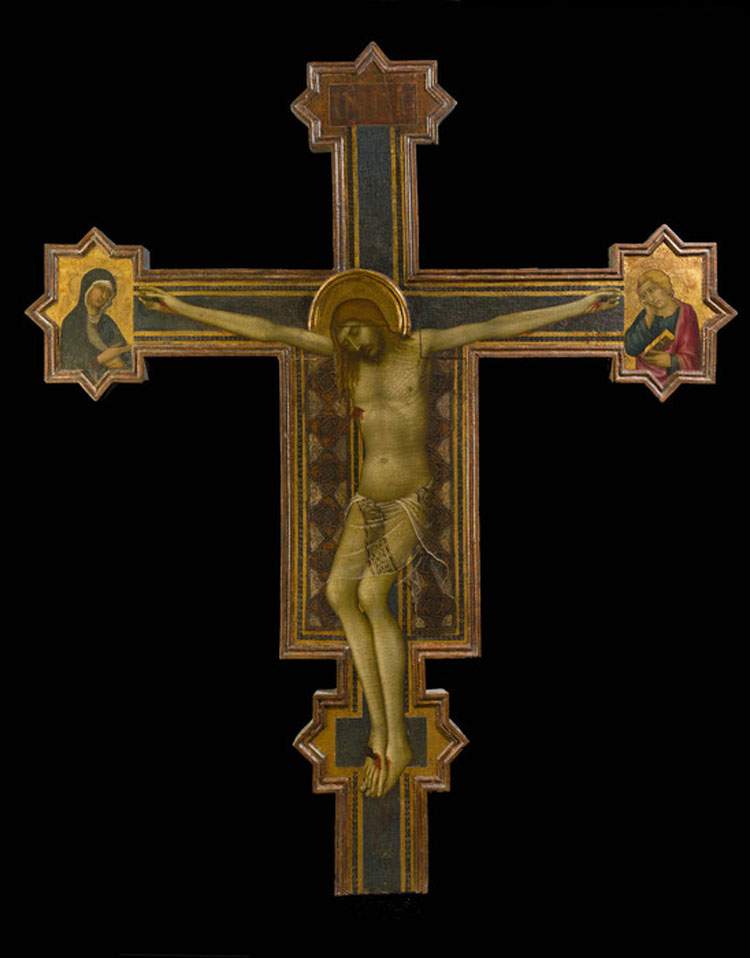Tuscany, finishes the restoration of Simone Martini's San Casciano Cross. Here's what transpired
The restoration of the wooden crucifix of San Casciano, a work by Simone Martini (Siena, 1284 - Avignon, 1344) kept in the Misericordia church in San Casciano in Val di Pesa (Florence), which scholar Pierluigi Leone De Castris, in his comprehensive catalog of the Sienese artist’s paintings, declared as “unjustly one of the painter’s least known works,” is now finished. The work is one of the most interesting painted crosses of the fourteenth century, and critics have always debated mainly on two issues: the dating (and, consequently, the occasion for which the artist supposedly painted the work) and the homogeneity of quality. In particular, many critics have recognized a quality gap between the figure of the crucifix and that of the mourners, believing that they are portions made by different hands. Again, on the provenance of the work, it has been proposed (not without doubt and debate) that the cross can be identified as the one that Simone would have painted for the Palazzo Pubblico in Siena between 1321 and 1322. For some it is one of the last works the painter produced before moving to Avignon. The first to attribute the work to Simone Martini was, in 1912, Giacomo De Nicola.
The restoration was carried out by theOpificio delle Pietre Dure of Florence and supervised by restorer Alessandra Ramat of the Opificio, who during the “restitution” of the cross to the Misericordia church explained all the stages of the intervention, which was necessary to consolidate the structure of the cross and prevent the deterioration of the painting: first the intervention of cleaning the paint film was carried out, conducted with a scalpel controlled through a microscope (the film of Simone Martini’s cross is in fact very delicate), also useful to distinguish any layers superimposed during previous restorations. The restoration of the wooden support was then carried out.
According to Marco Ciatti, director of the Opificio, the cross may have been made around 1315, or at any rate no later than 1320. Moreover, again according to the director, one of the most interesting data to emerge from the restoration concerns precisely the figures of the mourners on the arms of the cross, whose authorship has always been debated, with critics inclined to assign them to Simone’s pupils. Ciatti pointed out that the intervention made it possible to show a substantial homogeneity of execution between the crucifix and the mourners: therefore, now the cross is waiting to be discussed again by art historians with the new elements acquired with the important restoration. And the public can now admire it again, after eight years of absence (it was 2011 when it went to the workshop) in its church.
 |
| Tuscany, finishes the restoration of Simone Martini's San Casciano Cross. Here's what transpired |
Warning: the translation into English of the original Italian article was created using automatic tools. We undertake to review all articles, but we do not guarantee the total absence of inaccuracies in the translation due to the program. You can find the original by clicking on the ITA button. If you find any mistake,please contact us.




























